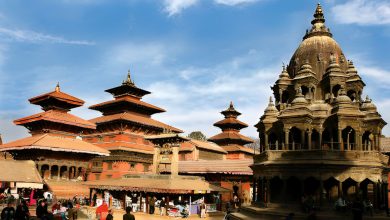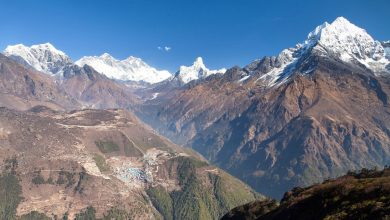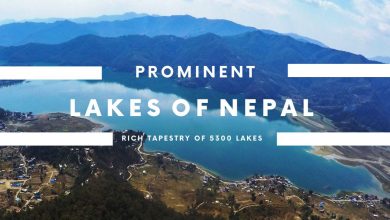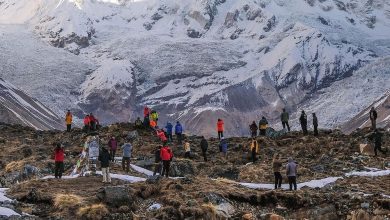Everest Base Camp Trek Weather & Temperature
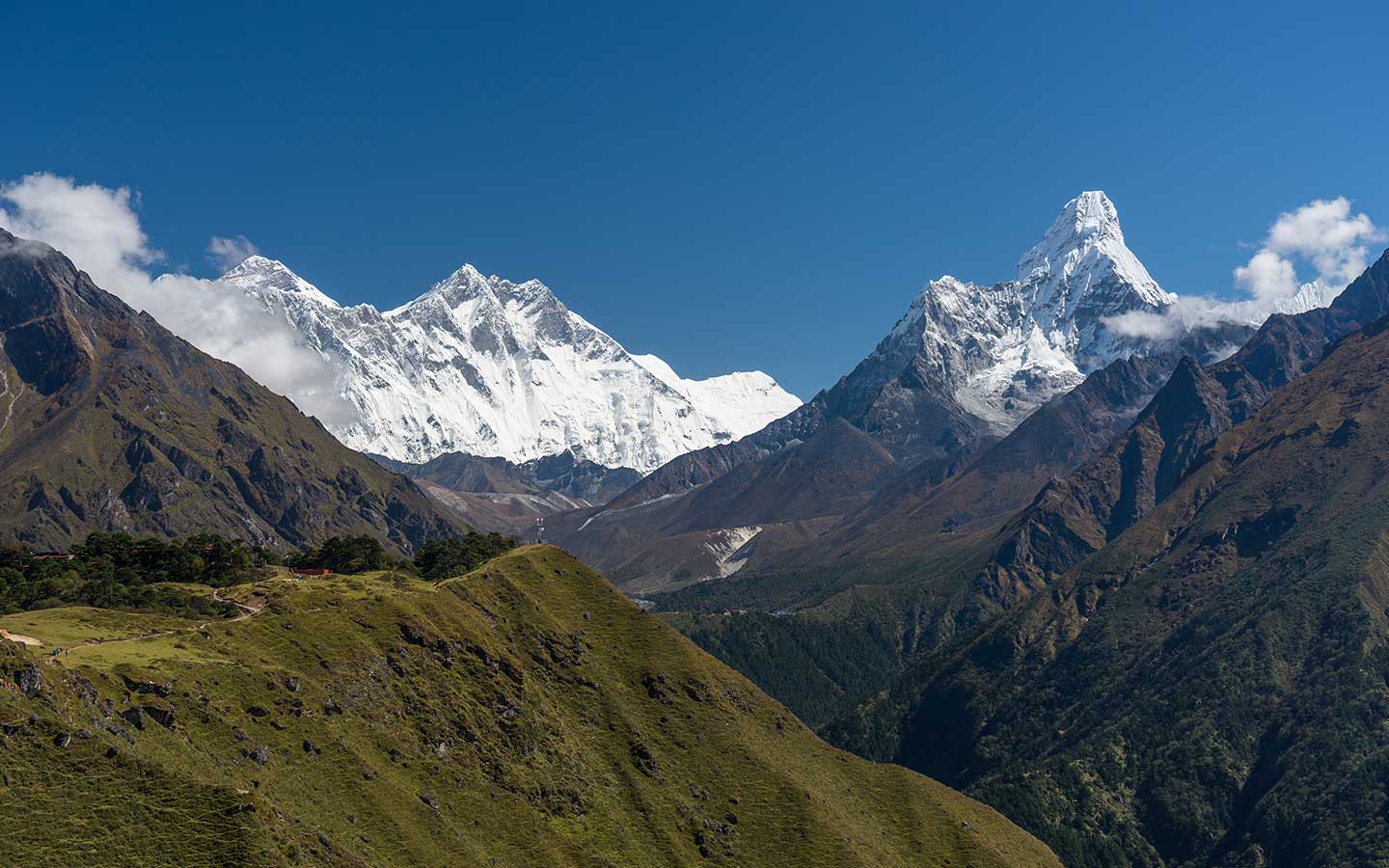
If you are going to Everest Base Camp, I suggest you check the weather at Everest before you go. This is mandatory since you have to gear up based on what the weather will offer you. Or else, you will have the toughest trek in Everest. At such a high altitude, highest of 5555 meters at Kalapathar, the weather is never certain.
Everest Base Camp,
“Everest” is a dream of the keen trekkers, hikers, and climbers from around the world. Everest base camp trekking is one of the most popular activities in the Everest region.
Every year, thousands of trekkers from around the world come to Nepal to do Everest base camp trekking. This trek will take you to the footstep of the Everest massif. You will reach 5555 meters at Kalapathar, the best viewpoint of Everest.
Trekking to Everest base camp is about surfing through the remotest trails in Everest. You will be walking through splendid Himalayan views, along with splashing rivers, into lush jungles, and through traditional villages. The adorable Himalayan views will accompany you on your trek.
Another impressive thing about the Everest region is the Himalayan Sherpa people. Trekking through the diverse high altitude communities of Sherpa is a beautiful experience. Also, it is a great opportunity to explore their way of life, traditions, culture, and socio-economic aspects.
During the trek, you will also see lots of Buddhist Monasteries, chortens, prayer flags, mani walls. Another attraction of this trek is the Sagarmatha National park, a UNESCO world heritage site. Walking inside the periphery of the park, you will see a wide variety of plants and animals. You will also see lots of dramatic mountains, glaciers, waterfalls, and icefalls en route.
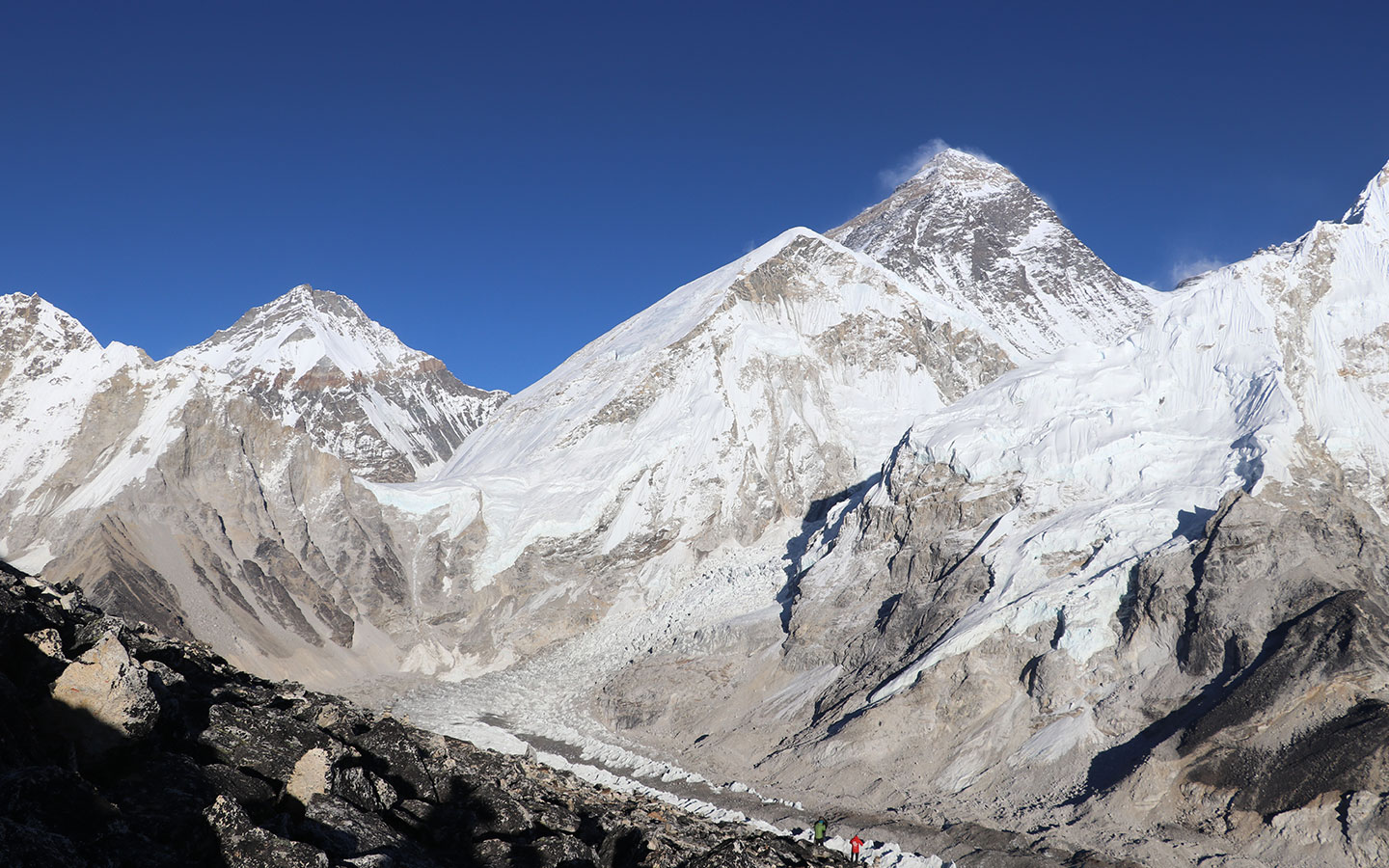
Weather at Everest Base Camp
Autumn in Everest
Autumn is the best time of the year for Everest Base Camp trekking. It has the most favorable weather and temperature for travel and trekking activities. During this time, days are neither too hot nor too cold. There is less chance of rain, snow, and unexpected weather blows. So, you will enjoy the pleasantness everywhere on the trek, even at 5555 meters.
The weather is the most stable than in other seasons. The less humid atmosphere and the monsoon-washed surrounding are the clearest and crisp. You will get the clearest views of the mountains and the landscape under the serene blue sky.
Trust me, the weather of Everest Base Camp in Autumn is the best. You should visit the Everest Base Camp in Autumn. Autumn truly is such an amazing time you will have in the Everest region.
Spring in Everest
Spring is also the best time for Everest Base Camp trekking. It is the time of wildflowers and the soothing melodies in the forests of the Sagarmatha National Park. Spring, the pre-monsoon time in Nepal is the time when the forests bloom in rhododendron and magnolia everywhere.
You’ll also see different flora and fauna transforming after the harsh struggles of winter.
There is the least chance of rain and snow in Spring. Plus, the lowest precipitation in the season offers the sharpest views of the Himalayan chains. You’ll be walking alongside with lush vegetation, and exotic mountainside settlements.
Summer in Everest
Summer is the season when the cascading waterfalls and rushing rivers come into life. With the rainfall, the trail is washed away and you get to walk in the lush vegetation.
You have a high chance of getting the clearest views of the mountains and the landscapes after it rains. However, always keep this in mind that in this humid month, there are chances that fog covers the crisp views of mountains.
Plus, you may go through leech bites and slippery trails if you trek during this time. So, you must plan your trek carefully if you are choosing summer treks.
Winter in Everest
Winter is the month of snow. The whole surrounding turns into winter wonderlands. If you love trekking in snow, choose the Everest Base Camp trek in winter. However, the Everest region is much colder at this time.
The nights and mornings are really cold. During mid-winter, there are chances that you might have to face strong blizzards and wind storms. So, it is a good idea to go well loaded if you are trekking to EBC during winter. You must prepare to beat the unpredictable weather conditions.
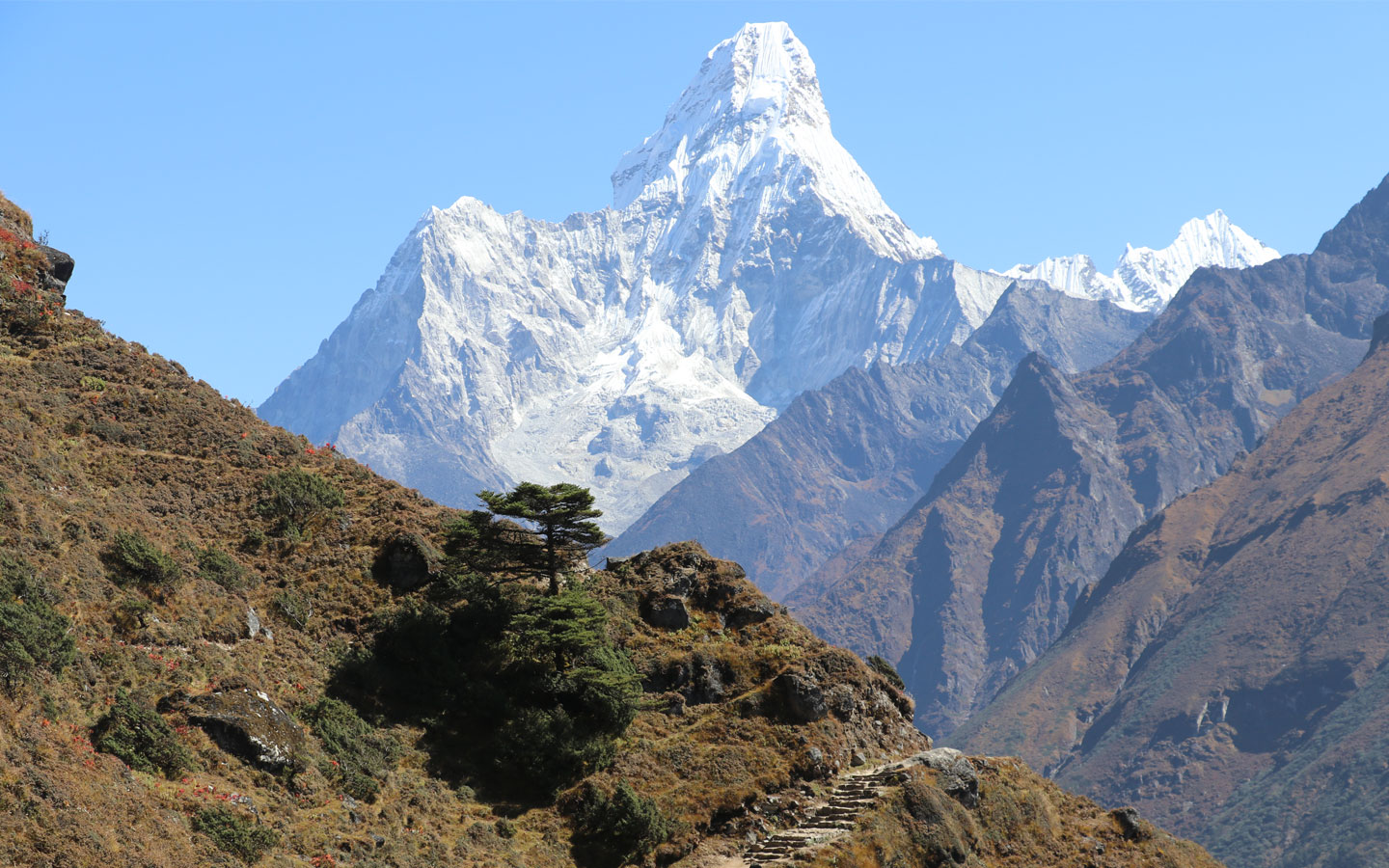
Temperature Along the Everest Base Camp Trail
Kathmandu (1400 meters)
Kathmandu has a moderate temperature. The temperature in Kathmandu isn’t too hot as in Terai and isn’t too cold as in the Himalayas. The temperature in Spring and Autumn are similar. Summer is hot with temperature averaging around 26.5-degree celsius. In winter, the temperature drops and the temperature averages around 17 degrees.
| Season | Max Temperature:
|
Minimum Temperature: | Average Temperature: |
| Autumn | 28 | 18 | 23 |
| Spring | 28 | 19 | 23.5 |
| Winter | 19 | 15 | 17 |
| Summer | 28 | 25 | 26.5 |
Lukla (2860 meters)
Lukla is a Himalayan region. Flying from Kathmandu to Lukla, you will experience the drastic variation in the temperature by yourself. As you land there, the cold breeze of wind from the Himalayas will hit your face.
In Autumn, the temperature in Lukla averages around 8.5 degrees. Likewise in Spring, it averages around 6.5 degrees. Winter is the coldest time when the average temperature drops below the freezing point (nearly -2 degrees). Summer is warmer than the other seasons. The temperature in Summer averages around 12 degrees in Lukla.
| Season | Max Temperature:
|
Minimum Temperature: | Average Temperature: |
| Autumn | 15 | 2 | 8.5 |
| Spring | 14 | -1 | 6.5 |
| Winter | 5 | -9 | -2 |
| Summer | 14 | 10 | 12 |
Namche (3440 meters)
Namche is a high elevation. So, the temperature is low here as well. The temperature in Namche Bazaar is colder than in Lukla. There are chances that it can snow lightly even in Spring at Namche. So, consider this place as a cold place, especially at nights and mornings.
In Autumn, the temperature averages around 9 degrees. In Spring, it averages around 7 degrees. Winter is really cold with temperature at nights dropping to a very low temperature. In Summer, the temperature will average around 12 degrees.
| Season | Max Temperature:
|
Minimum Temperature: | Average Temperature: |
| Autumn | 15 | 3 | 9 |
| Spring | 15 | -1 | 7 |
| Winter | 2 | -9 | -3.5 |
| Summer | 14 | 10 | 12 |
Gorak Shep/Everest Base Camp (5380 meters)
Everest Base Camp, Kalapathar (5555 meters) is the highest point on the trek. At the base camp, the temperature in Autumn averages around 7 degrees. In Springtime, the temperature averages to nearly 4 degrees. Winter is very cold there. You will see heaps of snow around the base camp. Spending night at Gorakhshep demands warm gears. Bring them. In Summer, the temperature averages to nearly 12 degrees.
| Season | Max Temperature:
|
Minimum Temperature: | Average Temperature: |
| Autumn | 12 | 2 | 7 |
| Spring | 13 | -5 | 4 |
| Winter | 2 | -12 | -5 |
| Summer | 13 | 10 | 12 |
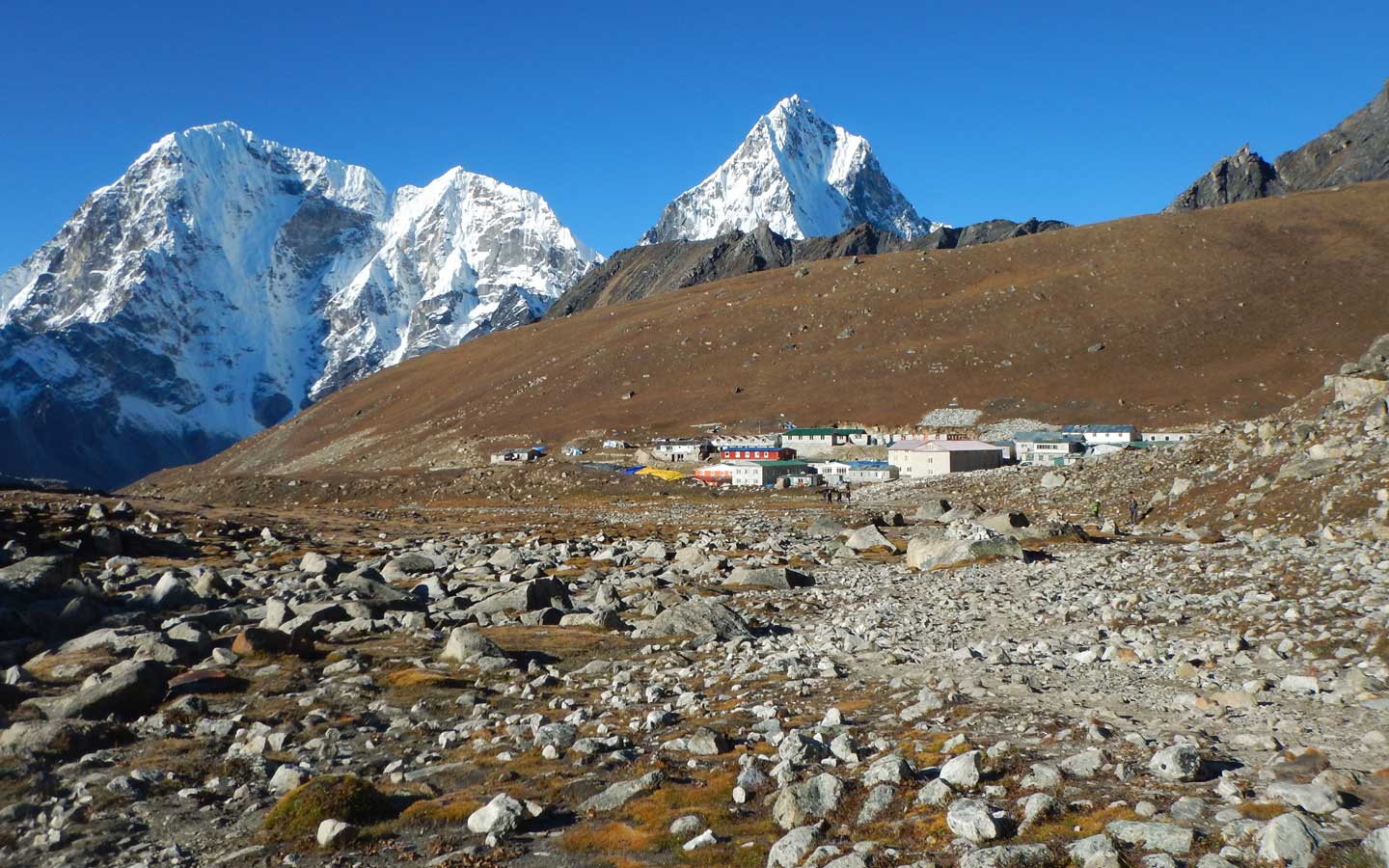
When Should I Go Trekking to Everest Base Camp?
If you are a first-timer, you should definitely go trekking to the Everest Base camp in the best seasons. The best time for Everest Base Camp trekking begins in February and passes all the way through March. Another suitable time for the trek, it begins in September and happens through October.
Trekking in these times means you are placing yourself on a safer side. These months have stable weather and temperature. Also, you will have to face lesser difficulties due to harsh weather while you are trekking then. The Himalayan views will be incredible because of the great visibility in the air.
This is a regular season, which means you will have to encounter lots of trekkers en route. The teahouses will be busy and mostly occupied as you move to higher altitudes. Now, you must be wondering why at the higher altitudes? Well, this is because there are few teahouses as you trek higher.
Also, you have to remember to bring warm gears for nights. Nights are colder than the days in all the seasons. Carry a down jacket and a warm sleeping bag that helps you to stay warm and comfortable.
Can I trek to Everest Base Camp during Off- Seasons?
Before you tell me that you want to go trekking in Everest base camp in off-seasons, tell me that you aren’t a beginner. It is a bad decision for a beginner to attempt Everest Base Camp Trekking in the Everest region during less favorable months like Winter and Summer means you’re taking a big risk.
Talking about Summer, it isn’t the hear that will bother you on the trek, but the rain. Monsoon and summer coincide in Nepal. So, expect the trekking trails to be highly slippery and wet in Monsoon.
The trekking trail passes through forested areas in the lower elevations. As you go higher, there are fewer trees, more rocks, and barren landscapes. Some of the ascents like high ascents before Namche and Tengboche, you can hardly imagine climbing them when it’s monsoon time.
Also, the sky might be cloudy and the atmosphere can be blurry with poor visibility. Wait! there’s one more thing, the summer insects and bugs. They’ll trouble you a lot while you trek through the forested trails in the lower elevation. It is hardly possible not to get a leech bite while you trek in monsoon and do not get leech bites.
Now, about winter, it is the coldest time of the year in Everest. Okay, you might be thinking, you will carry warm gears to beat the cold. Well, that makes sense. But Everest isn’t what you expect it is. With winter comes snow. With snow, snowstorms and blizzards are associated. So, it isn’t as simple as you think. Bad weather can come anytime. You must always be ready to see whatever comes.
Now, for those experienced trekkers who have this “Can I go or not?” query on the mind, wait a sec. Trekking in off-seasons is obviously difficult than going in the other times. But with adequate gears and useful plans, you can. In fact! These are the best time to avoid the crowds and loud in the Everest Base Camp trekking trail.
Carry amazing rain gears, rain boots, backpack cover, and other gears for summer. However, for winter, you should bring the warm gears that will keep your body warm and healthy.
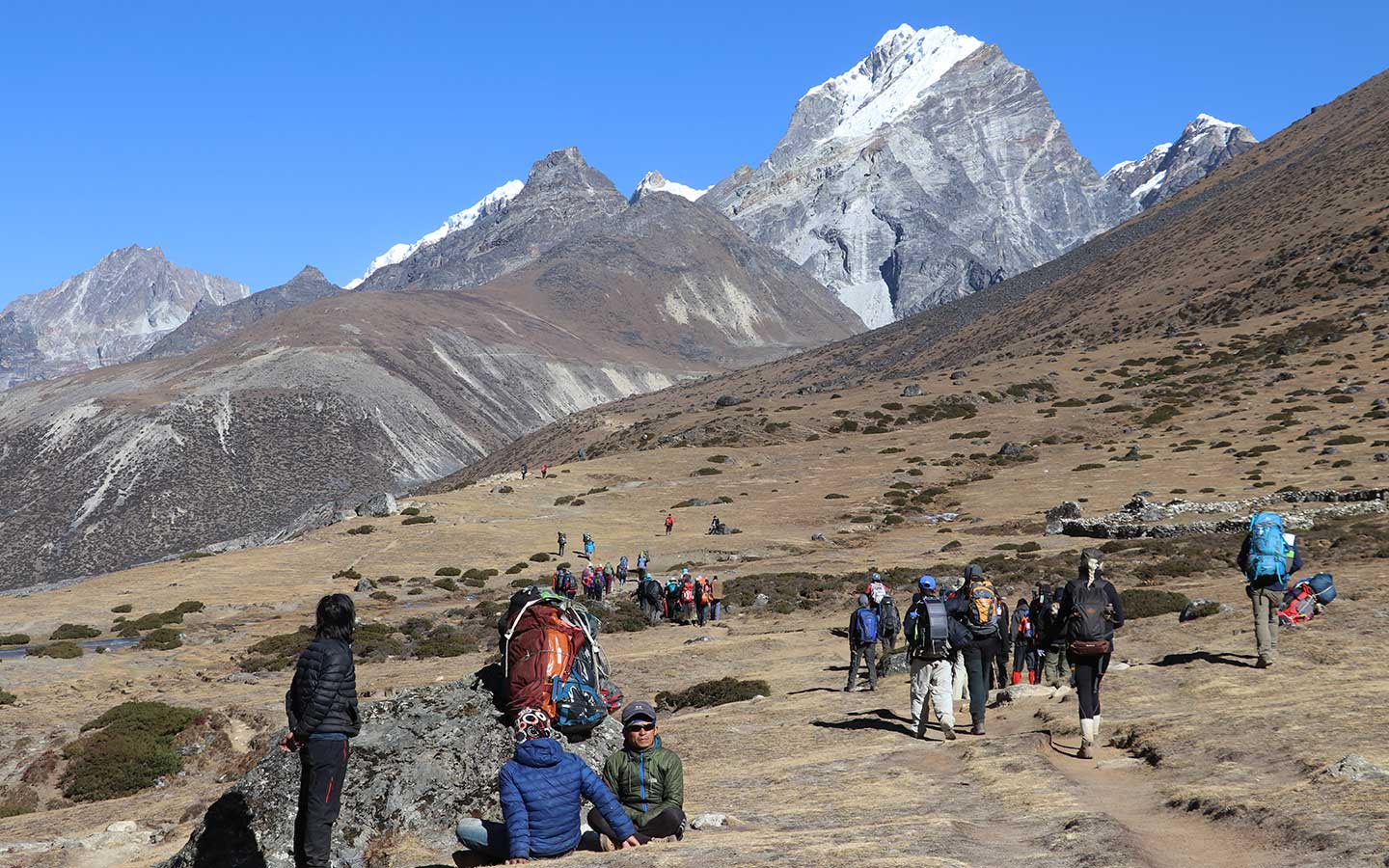
Everest Base Camp Trek: Guide or a Porter?
If this is your first time trekking, you might be wondering who a guide is. A guide is someone who will lead you on your overall journey. You meet with difficulty and you are not alone. The guide will always walk ahead of you through every challenge.
So, going with a guide, you will have a comfortable trekking experience in any seasons, and in any weather conditions. Thus, I would always go with a guide while you trek in the high altitudes of Nepal.
Do you think you can walk for 14 days on the rugged trails of Everest? Can you carry all the baggage and walk through the ascending and descending trails? If you think you can, try to pack fewer things (only those that are necessary). It is really difficult to trek with a heavy load on your back.
If you think you want to walk relaxing, without any gears on your back, you can hire a porter. Lessening your burden will help you relax and enjoy yourself.
Conclusion
Every experience in Everest is remarkable. If you do not visit the Everest region once in a lifetime, then you have missed something noteworthy. But when do you want to go? In what season?
Weather in the mountains can often go unpredictable. You cannot be convinced of the best weather. There are cases that the weather can become unpredictable in the best season also.
So, before you opt for this trek you must prepare yourself physically as well as mentally for anything that may occur along the way. Plus, it’s a great idea to have some spare days. These days are reasonable in cases when your flight gets delayed or cancelled.
No matter what season you will be trekking you should maintain your health and hygiene while hiking. You should keep yourself hydrated in order to feel energetic and to keep altitude sickness at bay. Indulging in small snacks like chocolates, protein bars, nuts, etc will recharge the calories you burn throughout the day.
